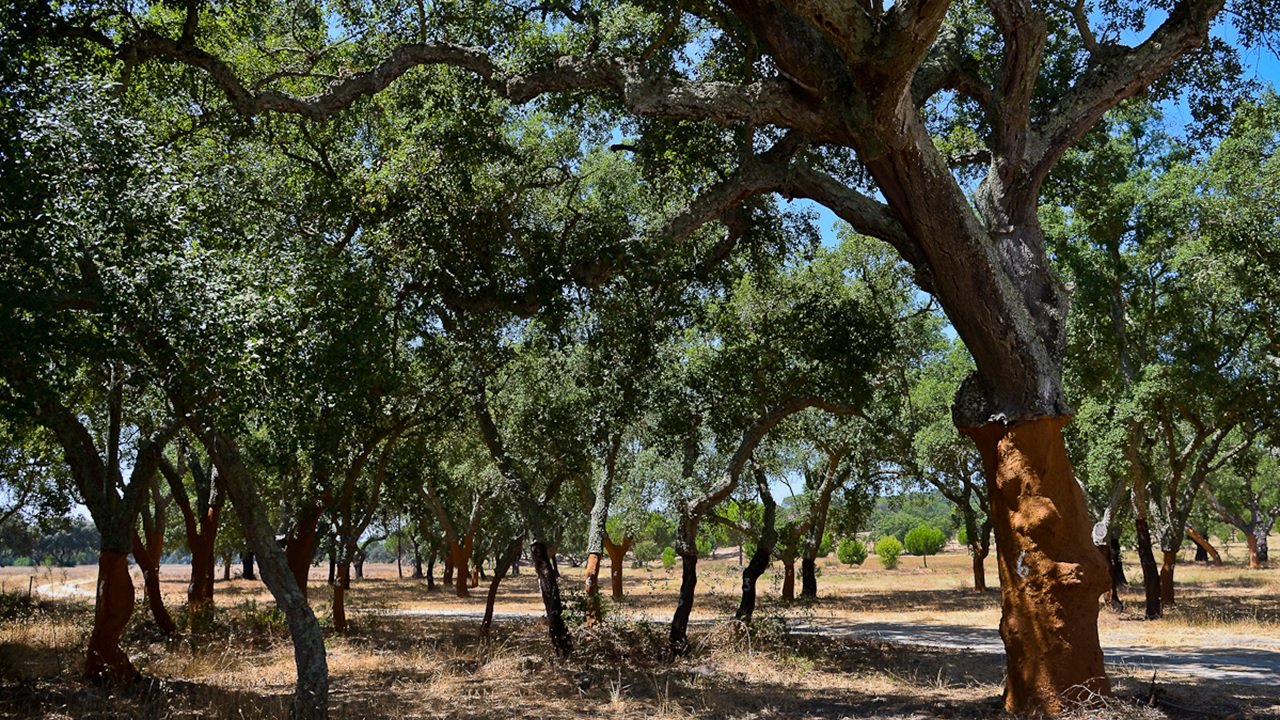Portugal’s Alentejo is a special place, unique and inviting. Making up 20% of Portugal, it has just 500,000 inhabitants, living in and around white-washed towns set on green plains, punctuated by hills and mountains, amid vineyards and olive groves. The Portuguese call the Alentejo, with its own way of speaking, singing and seeing the world, its own nation. But the Alentejo is also Portugal’s Cork Country, as this ancient land produces more than half of the world's total cork.
Extending from the southern banks of the River Tejo to the mountains that frame the Algarve, the Alentejo is met by the Atlantic to the West, and the River Guadiana and Spain on the East. The name means "Beyond the Tejo.”
Cork Country has distinct seasons, with a wet spring rich in wild flowers. In the early summer, storks build their nests on rooftops in whitewashed villages, and the heat turns the plains to gold. The winter is mild, but the open fields become bright yellow-green, and the shepherds dress in long capes to stay warm.
During summer green groves of cork oaks contrast the golden fields, sunflowers, and a wide blue sky. These ancient cork forests, called Montados, are the most expansive in Southern Europe. The cork oak (quercus suber), is native to the Alentejo and is one of the most common tree species in Portugal. The process of removal, done once every 9 years, involves removing the outer bark. You can see the stripping of the bark in the Alentejo, and a red tee indicates it has had its bark recently removed. The hardy cork oak then grows a new layer of bark. The protection of cork tree by law has resulted in thousands of acres of protected forests.
Cork is one of the most balanced and natural materials — and not only does its existence protect thousands of acres of land in Portugal, a cork is 100% biodegradable. Since back in the 17th century, when a certain Dom Perignon selected the bark of the cork oak as the perfect sealant for his champagne it has been something very special. Cork is a unique and the perfect closure for wine. There is enough cork today in the forests of Portugal to last more than a century.
In making cork, the tree is not harmed- as cork trees can live for centuries, protecting dozens of rare species of flora and fauna, and supporting a rural lifestyle. These Montados are a haven for wildlife: Forty-two bird species depend on them. Smaller birds, such as robins, finches and song thrushes, migrate to the Iberian Peninsula’s cork forests from Northern Europe, along with blackcaps from the United Kingdom. In spring and summer, the cork forests are home to a rich variety of butterflies and plants too. In the remote parts of the Montados, the rare Iberian lynx can be found.
To produce cork, a cork oak (Sobreiro in Portuguese) must be at least 25 years old. A cork oak can live as long as two centuries. Portugal’s cork industry is truly sustainable.
Because of the Montados the Alentejo is a rural and natural place and its market towns are timeless, wrapped in ancient walls. It is a place where a harmony between nature and humanity remains strong, where the people still remember so much of what has been forgotten.
* Jayme H. Simões is a travel blogger on Portugal. He grew up in Chicago, but spent summers exploring Portugal with his family.



